Selected Collections
The Metropolitan Museum of Art, New York, NY
Cooper Hewitt, Smithsonian Design Museum, New York, NY
DuSable Museum of African American History, Chicago, IL
William McBride | |
|---|---|
| Born | William McBride Jr. 1912 |
| Died | August 11, 2000 (aged 87–88) |
| Nationality | American |
| Education | The Art Institute of Chicago |
William McBride Jr. (1912- August 11, 2000) was an African-American artist, designer and collector. McBride began his career in the 1930s in the circles of black art collectives and artistic opportunities afforded by the Works Progress Administration. He would ultimately leave his mark in Chicago as a driving force behind the South Side Community Art Center. McBride distinguished himself as a teacher, as a cultural and political activist, and as a collector of African art and artwork by black artists of his generation. [1]
William McBride Jr. was born in 1912 in Algiers, New Orleans. [1] He was the second of three children of William and Mary McBride. When he was around ten years old, he joined the so-called Great Migration of African Americans as he and his family moved to the Chicago's South Side, where he attended St. Elizabeth grammar school and Wendell Phillips High School. [1] McBride passed away on August 11, 2000, at the Alden Princeton Rehabilitation Center in Chicago, at the age of 87. [1]
Early in his life, McBride was interested in the visual arts. In the early 1930s, he took classes at the School of the Art Institute of Chicago, [1] and he went on to join a collective of young black artists known as the Arts and Crafts Guild. The guild was formed by George Neal during the Great Depression, and its members met regularly to share techniques and skills, discuss art and politics, and raise funds for their own exhibitions and artistic pursuits. [1]
While collaborating with the Arts and Crafts Guild, McBride also worked for the New Deal's Civilian Conservation Corps. By 1935, McBride was working as an artist through the Federal Art Project of the Works Progress Administration (WPA), Illinois Art Project. Among his various WPA projects, McBride designed books and sketched costumes for the Federal Theater Project, including for such productions as the theatrical adaptation of Helen Bannerman's 1899 children's book, Little Black Sambo . [1]
McBride is also credited as an early supporter and featured artist of the South Side Community Art Center (SSCAC). The SSCAC was established by the Federal Art Project/Works Project Administration as an inner-city community art center located in a former mansion on S. Michigan Avenue in Chicago. The SSCAC was formally dedicated in 1941, but held its first exhibition on December 15, 1940. The exhibition featured paintings that had already been on display at the American Negro Exposition held in Chicago earlier that year. McBride's paintings were featured in the exhibition alongside works by his contemporaries, including Henry Avery, William Carter, Charles White, Archibald Motley Jr., Joseph Kersey, Margaret Taylor Goss (later Margaret Taylor-Burroughs), and Bernard Goss. Margaret Taylor Goss proclaimed the mission of the SSCAC as the "defense of culture." When the country entered World War II, the federal government drastically reduced WPA spending, with all federal funding for art projects terminating in 1943. Despite losing federal assistance, the SSCAC nevertheless remained active through local fundraising and community support. [1] To this day, the SSCAC remains the only surviving community art center created under the WPA. [1]
During the early 1940s, McBride served as publicity director of the SSCAC. He became renowned for his designs in souvenir books and posters for the SSCAC's Artists and Models Ball, which was the organization's annual fundraising gala. The first Artists and Models Ball was held in 1939. The event was considered a marquee calendar event in the Bronzeville neighborhood. McBride also created Christmas cards for the nearby tavern The Brass Rail. [1]
McBride's souvenir books and concert programs included advertisements for, representations of, and endorsements from many sectors of black Chicago society, such as the Metropolitan Mutual Assurance Company, a black Chicago insurance company. The promotional items created by McBride for the SSCAC would go on to become some of his most celebrated works. [1]
In the 1940s, McBride wrote a number of mostly unpublished plays, poems, and songs, and through the 1950s he was active in the Black Chicago Renaissance dance scene. [1] McBride served as art director for both the annual Sadie Bruce Dance Revue and the annual concert of the Mildred B. Haessler Ballet Group.
McBride learned screen-printing while working for the display section of Goldblatt's, a chain of department stores in Chicago. [2] [3] McBride later famously became inspired by African masks, and incorporated them into his screenprints, as in his series of prints featuring masks in the early 1940s. [2] McBride "looked to Africa for a visual language," [4] which he found in traditional African art exhibited in natural history museums and textile designs he reportedly came across in the British publication The Illustrated London News. [2]
McBride was known as "a collector's collector." [5] He traveled to postcolonial nations such as Ghana, Benin, and Nigeria, and collected African art to bring back to the United States. For this he is credited with helping to raise awareness in Chicago of the art and culture of the black diaspora. McBride was also interested in documenting his own community in South Side Chicago. Commenting on McBride's collecting habits, an observer quoted in a Chicago Tribune article described McBride as having gone "to virtually every art show, live performance and play, anything that was happening in the vibrant world of the South Side from the late 1930s to the early 1980s. And he'd go to an event and pull the paper off the wall and take it home." [6]
Early on, McBride recognized the talents of his fellow Chicago artists such as Charles White, Eldzier Cortor, William Carter, Charles Sebree, Richard Hunt, Marion Perkins, Margaret Tayler Goss Burroughs, Gordon Parks, Joseph Kersey, [3] [7] and over time built his own collection of their works. In 1995, McBride donated his collection of thousands of posters, playbills, exhibition catalogs and other ephemera to the Chicago Public Library's Vivian G. Harsh Collection of Afro-American History and Literature, a major repository of African American artists' activities in Chicago between the 1920s and the 1950s. [8] His papers include early SSCAC organizational and publicity files, as well as extensive files of cultural and political activities, correspondence, fliers, programs, posters, playbills, art studies and photographs. [1]
"Alone in Crowd: Prints of the 1930s and 1940s by African-American Artists From the Collection of Reba and Dave Williams" an exhibition organised and circulated by American Federation of Arts, opening at Newark Museum, N.J. and the Equitable Gallery, N.Y., Dec.10 1992-Feb.28, 1993.[ citation needed ]African American Designers in Chicago: Art, Commerce, and the Politics of Race Exhibitions, Chicago Department of Cultural Affairs & Special Events, October 27, 2018 – March 3, 2019
The Metropolitan Museum of Art, New York, NY
Cooper Hewitt, Smithsonian Design Museum, New York, NY
DuSable Museum of African American History, Chicago, IL
The Federal Art Project (1935–1943) was a New Deal program to fund the visual arts in the United States. Under national director Holger Cahill, it was one of five Federal Project Number One projects sponsored by the Works Progress Administration (WPA), and the largest of the New Deal art projects. It was created not as a cultural activity, but as a relief measure to employ artists and artisans to create murals, easel paintings, sculpture, graphic art, posters, photography, theatre scenic design, and arts and crafts. The WPA Federal Art Project established more than 100 community art centers throughout the country, researched and documented American design, commissioned a significant body of public art without restriction to content or subject matter, and sustained some 10,000 artists and craft workers during the Great Depression. According to American Heritage, “Something like 400,000 easel paintings, murals, prints, posters, and renderings were produced by WPA artists during the eight years of the project’s existence, virtually free of government pressure to control subject matter, interpretation, or style.”
Wolf Kahn was a German-born American painter.
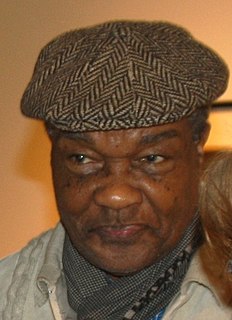
David C. Driskell was an American artist, scholar and curator; recognized for his work in establishing African-American Art as a distinct field of study. In his lifetime, Driskell was cited as one of the world’s leading authorities on the subject of African-American Art. Driskell held the title of Distinguished University Professor of Art, Emeritus, at the University of Maryland, College Park.
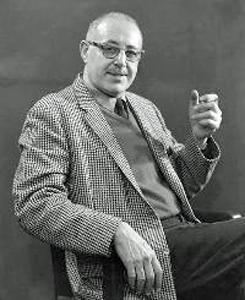
Harry Sternberg (1904–2001), was an American painter, printmaker and educator. He taught at the Art Students League of New York, from 1933 to c. 1966.

Keith Anthony Morrison, Commander of Distinction (C.D.), born May 20, 1942), is a Jamaican-born painter, printmaker, educator, critic, curator and administrator.

Fred Wilson in the Bronx, New York - is an American artist and describes himself as of "African, Native American, European and Amerindian" descent. He received a BFA from Purchase College, State University of New York. Wilson challenges colonial assumptions on history, culture, and race – encouraging viewers to consider the social and historical narratives that represent the western canon. Wilson received a MacArthur Foundation "genius grant" in 1999 and the Larry Aldrich Foundation Award in 2003. Wilson represented the United States at the Biennial Cairo in 1992 and the Venice Biennale in 2003. In May 2008, it was announced that Wilson would become a Whitney Museum trustee replacing Chuck Close.
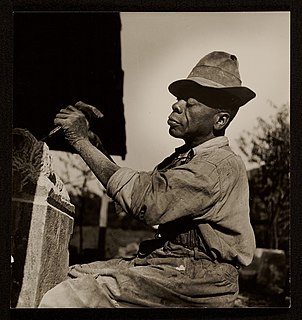
William Edmondson was the first African-American folk art sculptor to be given a one-person show exhibition at the Museum of Modern Art in New York City (1937).

The South Side Community Art Center is a community art center in Chicago that opened in 1940 with support from the Works Progress Administration's Federal Art Project in Illinois. Opened in Bronzeville in an 1893 mansion, it became the first black art museum in the United States and has been an important center for the development Chicago's African American artists. Of more than 100 community art centers established by the WPA, this is the only one that remains open.
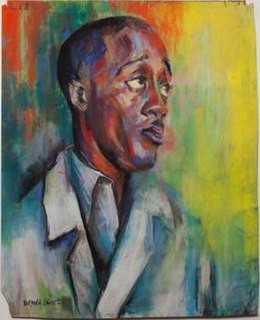
Norman Wilfred Lewis was an American painter, scholar, and teacher. Lewis, who was African-American and of Bermudian descent, was associated with abstract expressionism, and used representational strategies to focus on black urban life and his community's struggles.

Leon Dabo was an American tonalist landscape artist best known for his paintings of New York, particularly the Hudson Valley. His paintings were known for their feeling of spaciousness, with large areas of the canvas that had little but land, sea, or clouds. During his peak, he was considered a master of his art, earning praise from John Spargo, Bliss Carman, Benjamin De Casseres, Edwin Markham, and Anatole Le Braz. His brother, Scott Dabo, was also a noted painter.

Thornton Dial was a pioneering American artist who came to prominence in the late 1980s. Dial's body of work exhibits formal variety through expressive, densely composed assemblages of found materials, often executed on a monumental scale. His range of subjects embraces a broad sweep of history, from human rights to natural disasters and current events. Dial's works are widely held in American museums; ten of Dial's works were acquired by the Metropolitan Museum of Art in 2014.
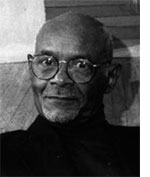
Hughie Lee-Smith was an American artist and teacher whose surreal paintings often featured distant figures under vast skies, and desolate urban settings.
Thomas Sills was a painter and collagist and a participant in the New York Abstract Expressionist movement. At the peak of his career in the 1960s and 1970s, his work was widely shown in museums. His work was regularly featured in art journals and is in museum collections.
James DeWoody is an American painter, printmaker, and sculptor who has worked in New York City since 1972. He was born in Ft. Smith, Arkansas, but grew up in Texarkana, Texas. He received his BA degree in English and Studio Art from Tulane University in 1967. DeWoody received his MFA degree from Pratt Institute in 1975 in painting, new forms, and art history, studying under George McNeil.
Samuel S. Hoffman was a twentieth-century American artist, most noted for his black & white monotypes.
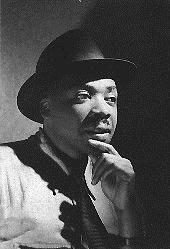
Claude Clark was an American painter, printmaker and art educator. Clark's subject matter was the diaspora of African American culture, including dance scenes, street urchins, marine life, landscapes, and religious and political satire images executed primarily with a palette knife.
Jacolby Satterwhite is an American contemporary artist recognizable for fusing performance, digital animation, and personal ephemera to create immersive installations inspired by art history, "expanded cinema", and the pop-cultural worlds of music videos, social media, and video games. Satterwhite was awarded the United States Artist Francie Bishop Good & David Horvitz Fellowship in 2016 and has exhibited work at institutions like the Museum of Modern Art, New York, the Minneapolis Institute of Art, the Museum of Contemporary Art, Chicago, Fondation Louis Vuitton, Paris, New Museum, New York, and the Institute of Contemporary Art, Philadelphia. He is based in Brooklyn, NY.
Benjamin Abramowitz was an American painter, printmaker, and sculptor. First recognized for his contribution at age 19 as senior artist with the Federal Art Project of the Works Progress Administration (WPA) in New York City, he is among the most respected Washington, D.C., artists of the past century.

Jolán Gross-Bettelheim was a Hungarian artist who lived and worked in the United States from 1925 to 1956, before returning to Hungary.
Willie Young is a 20th-century American artist. Young is mainly self-taught, and his work has been exhibited alongside other prominent outsider artists, such as Bill Traylor, Nellie Mae Rowe and Thornton Dial. The main body of his work consists of delicately rendered graphite drawings.
Works of art held in collections: